Back to Main
Yellowknife in April
By Camilo Calvo-Alcañiz. 10-minute read. June 28, 2025.
In 1960 my grandfather, Beto Alcañiz, took a trip from his home city of Buenos Aires to Alaska. With his friend Elias, the two traveled by car, motorcycle, and horseback across two continents, spending time at various stopping points to earn enough money for the next leg of the journey. Stories from this trip, as told to me throughout my childhood, usually ended when he reached the Alaskan border. The original plan had been to finish at a major city like Juneau or Anchorage, but it was too damn cold. So they stopped at the border.
But it turns out that’s not where things ended. Before catching a plane down south, they meandered east across Canada. There weren’t too many stories about this part of the trip. I know it was a cold autumn, and most of what they saw was wilderness or small towns built around the fur and timber trade. But he highlighted one city in particular: Yellowknife. According to him, he found it interesting that it was full of Germans working in the fur trade.
He told me this tidbit about Yellowknife a year ago, and for some reason I became fascinated with the city. I mean, it’s really far north. Farther north than anywhere I’ve ever gone, excluding Iceland.
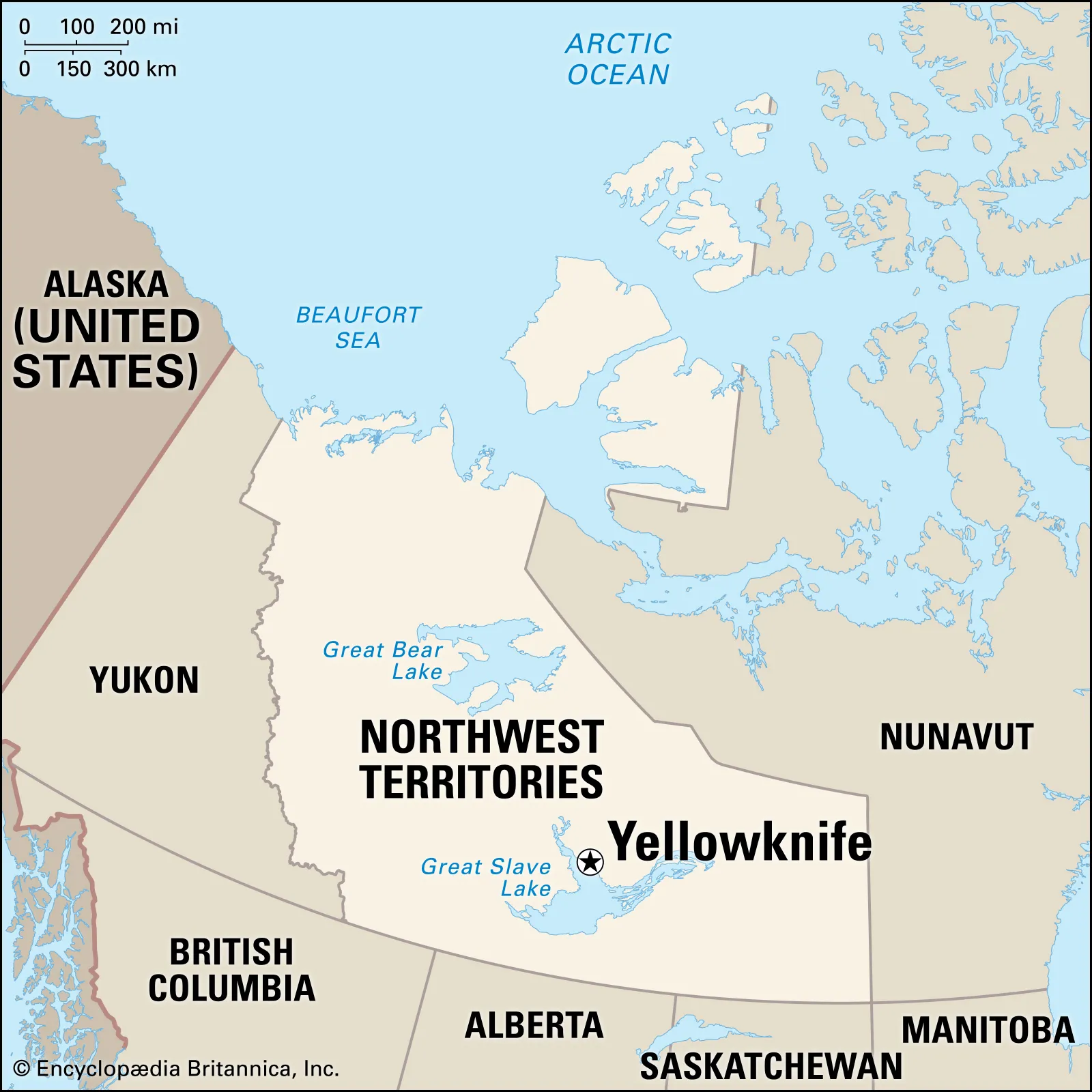
I decided, both as a kind of tribute to him and to assuage my own curiosity, that I would visit Yellowknife myself. I booked the flight for early spring, when temperatures would still be cold but the days would be a bit longer. And because my fiancée didn’t want to travel to the Arctic during the long winter, I went alone.
I arrived on April 2nd at midnight. After hours of darkness over northern Ontario, Manitoba, and Saskatchewan, I saw a dim orange glow in the distance. It was Yellowknife, sitting on the northern shore of the Great Slave Lake. It was an island of light surrounded by darkness—the only way out was a 15-hour stretch of road down to Edmonton. To the east, a local trail connected the city to a few campgrounds and smaller lakes. In every other direction was wilderness.
There was a faint snow falling as we descended to the tarmac, something close to a frozen mist. This, I was later told, was unusual for the dry spring season. Because of the lack of wind, it wasn’t too unpleasant, even though the temperature was below ten degrees Fahrenheit.
In the morning I went out on a walk just before sunrise to feel the cold. That was a big part of why I came—some people come for the Aurora, I came for the cold. Even under my wooly hat and scarf it got through to me. A gentle breeze would pick up and my jaw would go numb within seconds. Then, as the breeze died and the morning sun peeked out, it would thaw a bit. This uncomfortable cycle of thawing and unthawing continued until I got back to heat and safety of my lodging.
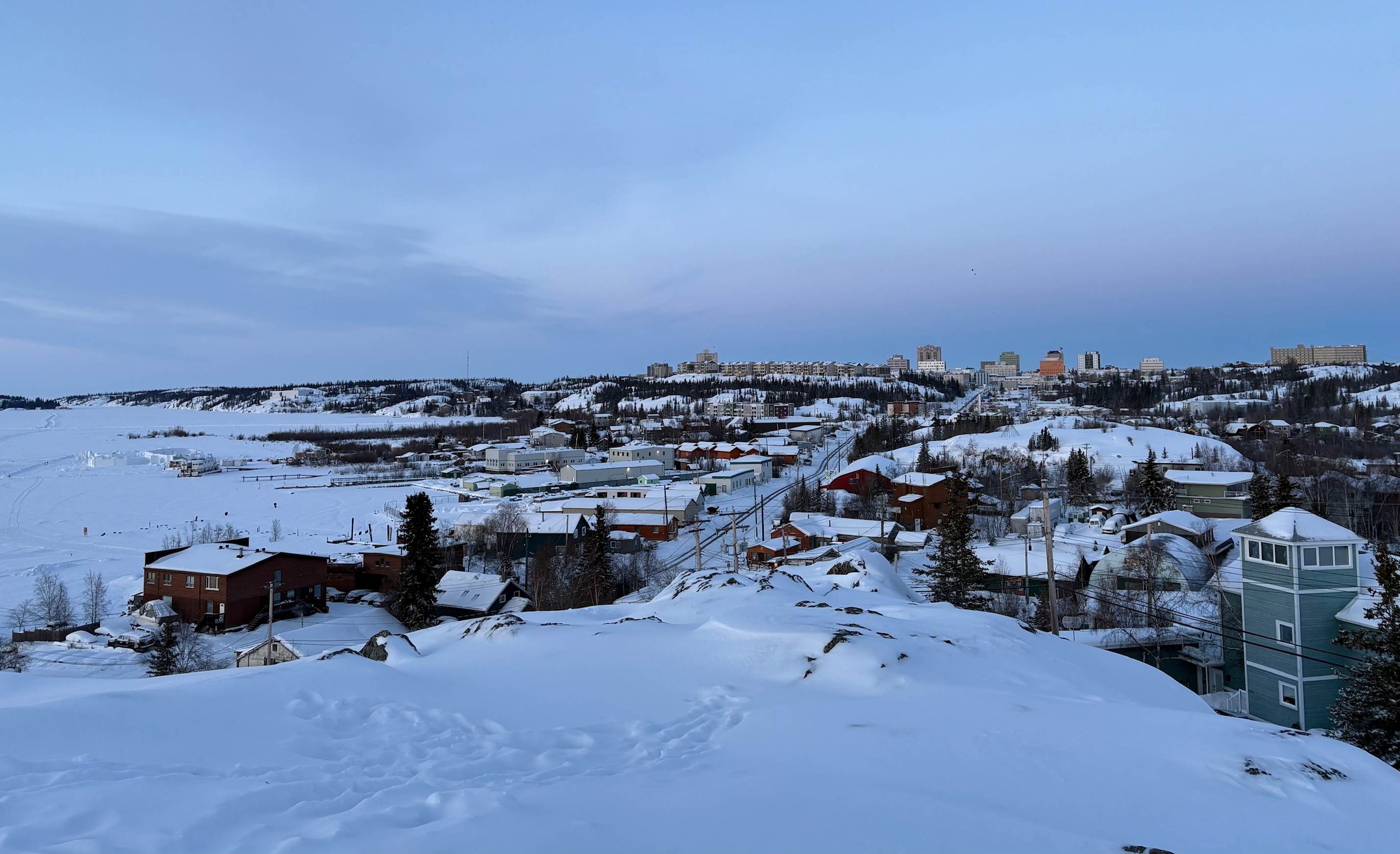
In the 65 years between my grandfather’s and my visit, the town had changed pretty significantly. No longer an industry town, Yellowknife was now a modern multicultural city. If there had once been a German identity here, it was now impossible to spot. Despite this, there was still a rugged aspect to the city. The isolation and rocky terrain serves as a reminder that the city is a frontier town. There’s nothing of this size anywhere farther north in Canada.
As the morning sun continued to rise, I stopped by the visitor center downtown to ask how safe it would be to hike the surrounding wilderness. I was informed by the woman behind the counter that the bears were still hibernating and that wolves were unlikely to attack me. Feeling reassured, I rented a car and headed east towards a hiking trail I had long planned to visit: Prelude Lake.
Yellowknife and the surrounding region sit on the western arm of the Canadian Shield, a large area where Earth’s bedrock reaches all the way up to the surface. At most, a thin layer of topsoil separates this bedrock from the open air. Yellowknife’s part of the Canadian Shield was blasted by glaciers during the last ice age, leaving the landscape rocky and rolling. These aren’t the gentle hills of the Eastern United States—these are the vertebrae of our planet, jagged rocks somewhere between the size of a boulder and a hill.
Between these rocks sat patches of knotty, twisted pines. The predominant species, black spruce, is a narrow and scruffy tree. Most are missing patches of needles, as if parts of them had been picked clean. At their tip, they are overloaded with clusters and clusters of pinecones, making them appear even more top-heavy. A gentle wind was enough to make them sway. If two were close enough, they would rub against each other in the breeze, making a noise halfway between a rustle and two claves being struck.
In the extreme cold and wind, some of these spruces had grown into truly strange shapes. Solitary pines, in tiny pockets of topsoil, were typically the most deformed. At the far end of the trail, one of these pines marked the edge of the walkable path. Its branches formed a “K” shape.
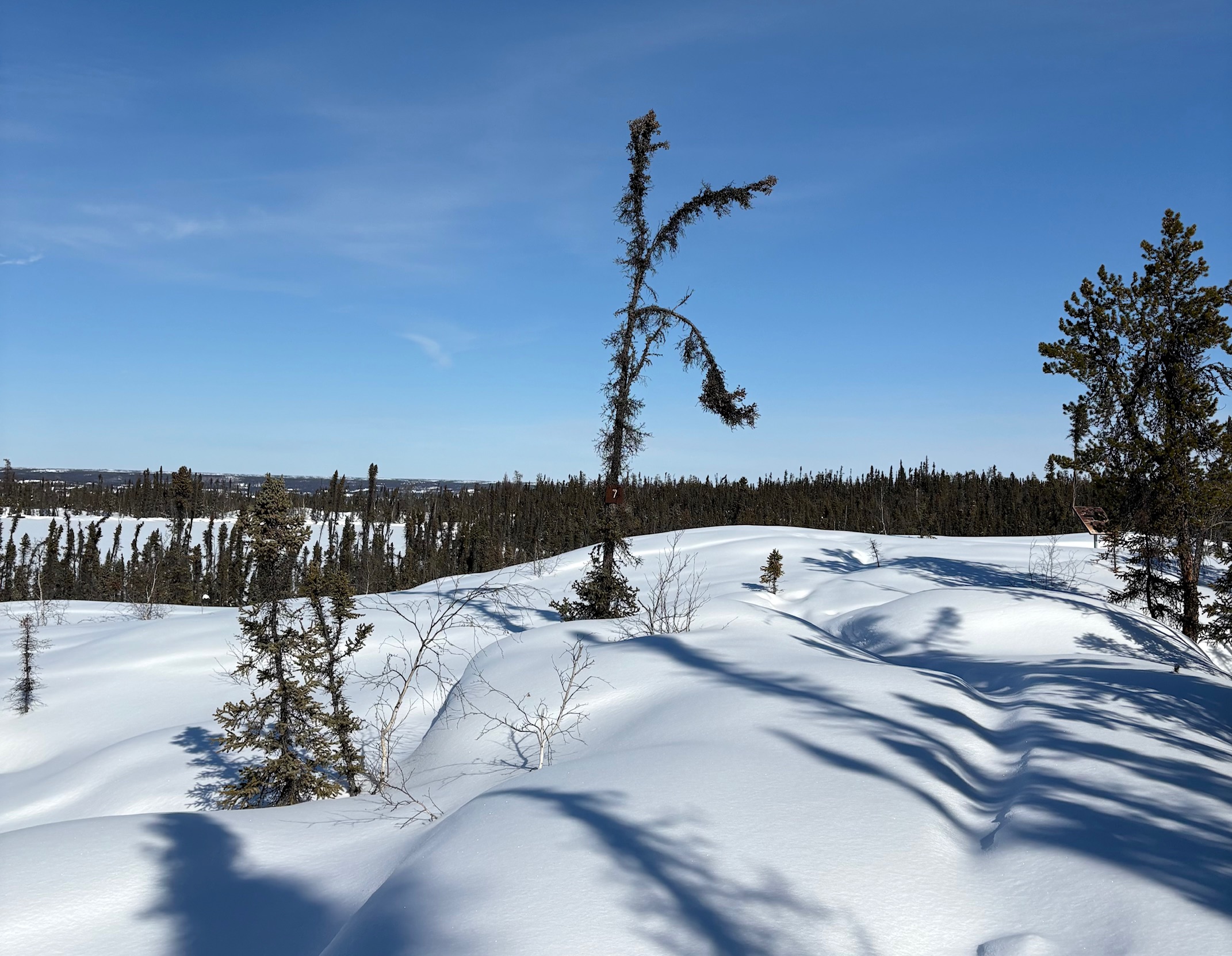
In my mind, these friendly trees were the cold-weather cousins of the saguaro, Arizona’s iconic armed cactus. Like the spruces of the Northwest Territories, they exist in a hostile environment, are well spaced out, and can configure themselves into some truly bizarre shapes:
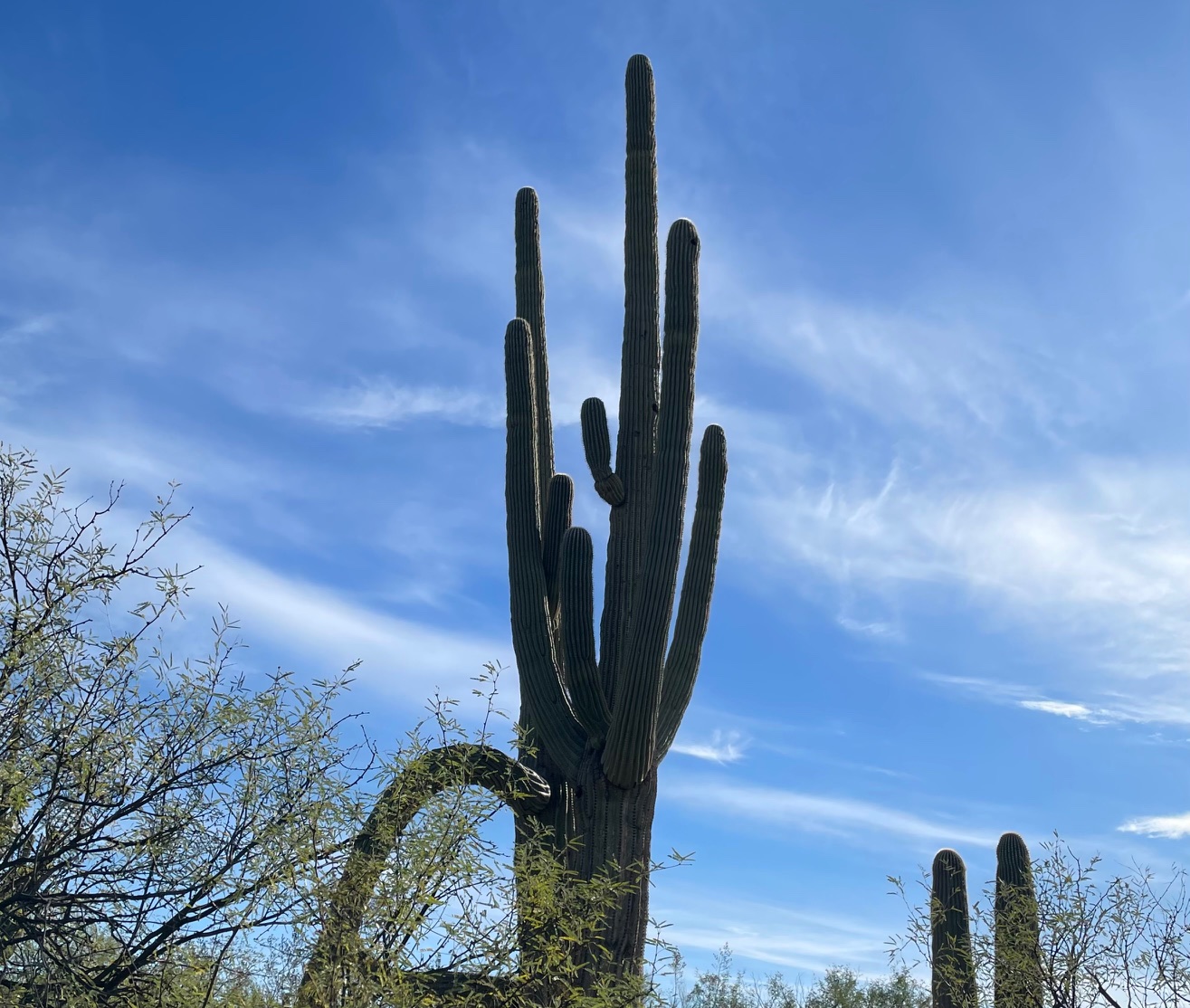
The Prelude Lake trail was a mixture of these two elements—rocks and trees, up over boulders and down through groves. It was also coated in several feet of snow, softened by a deceptively warm sun. The result was that every minute or so, I would fall into the snow up to my thigh. I tried everything I could to stop this from happening, but it didn’t do me any good. I was just heavier than the snow. As the day went on and the sun got even warmer, I reached sections where I couldn’t even get above the snowline. I would just trudge and trudge until I found a bit of tougher snow, whether in the shade or packed tightly on some exposed rock. I’d catch my breath, and start the next stretch of trudging.
The trail was immensely quiet. It was a kind of in-between season—locals were sick of the cold, winter tourism had died down, and any visitors who were in town were mainly interested in the Aurora. I saw no one else and no other footsteps in the snow. For the majority of the hike, the only noises were the wind, the spruces rustling against each other, and my own trudging. At one point, I heard a crow’s wings flapping from several hundred feet away. It was that quiet.
After Prelude Lake, the trip passed quickly. I had gotten what I came for—the cold, the quiet, the remote beauty. Everything else, from driving on an ice road between Yellowknife and Dettah to visiting the town’s museum, felt more like killing time.
The last afternoon, I grabbed a beer at the town’s main brewery and chatted with the people in my corner of the bar. They were all travelers. To my left were three Korean girls who had come to see the Aurora. To my right was a researcher from Alberta, studying Arctic char. He explained to me how several times a year, he flies to the Arctic coastline to study this fish, which is an important food source for the Inuit who live there. He went into detail on the fishes’ spawning habits and their viability for farming. I’m a simple computer programmer, so most of it went over my head, but it was nice to hear someone so passionate about a fish.
The walk home from the bar that evening felt particularly nice. With the late sunset on my face, the cold didn’t bother me as much. I was even able to take off my hat and open up my jacket. Near my lodging, I spotted a group of white birds, cute and unlike anything I had ever seen. These were willow ptarmigans, a fluffy native of the subarctic. A group of tourists was gathered around them, admiring their charm.
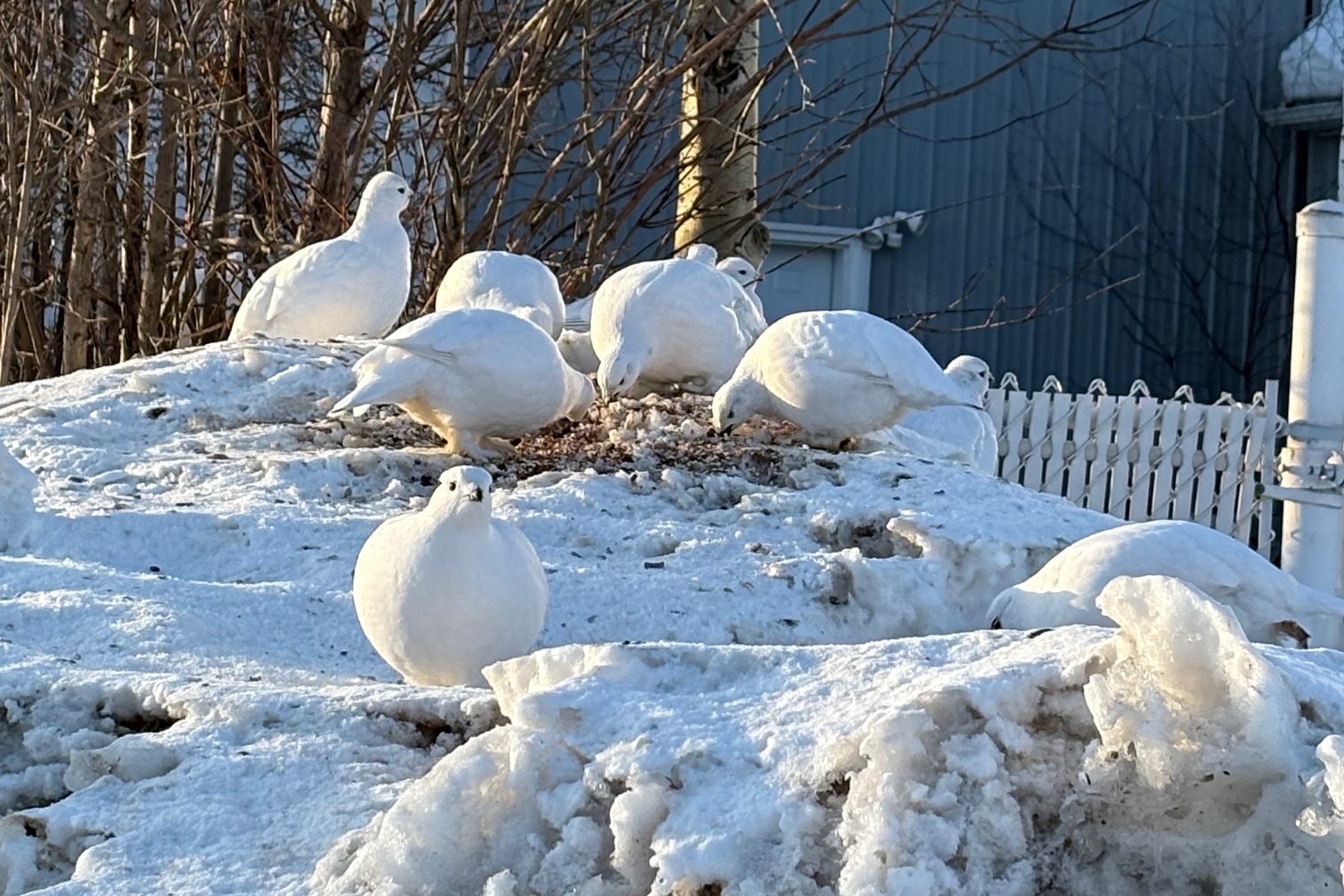
Unfortunately, I didn’t get to tell my grandfather about my trip. When I called him after returning to D.C., I didn’t bring it up because I was still turning things over in my head and figuring out what to say. But just a few weeks later, he passed away after a long battle with various heart and pulmonary conditions. It was a tough few weeks after that.
I’ve sat with these thoughts about Yellowknife for a while, and I thought it would be good to write them out and make them available for others to see. It’s partly for my own sake, to reflect on a trip that wouldn’t have happened without my grandfather. But it’s also a reminder that there’s more to the world than we might notice in our day-to-day lives. Thousands of miles away from our homes, there are things worth seeing and people worth meeting.
Every morning and every evening in Yellowknife, on the side of Franklin Avenue, between 41st and 42nd Street, on a little outcropping of snowy rock, the willow ptarmigans socialize and preen and make their nest. You can go see them if you like.